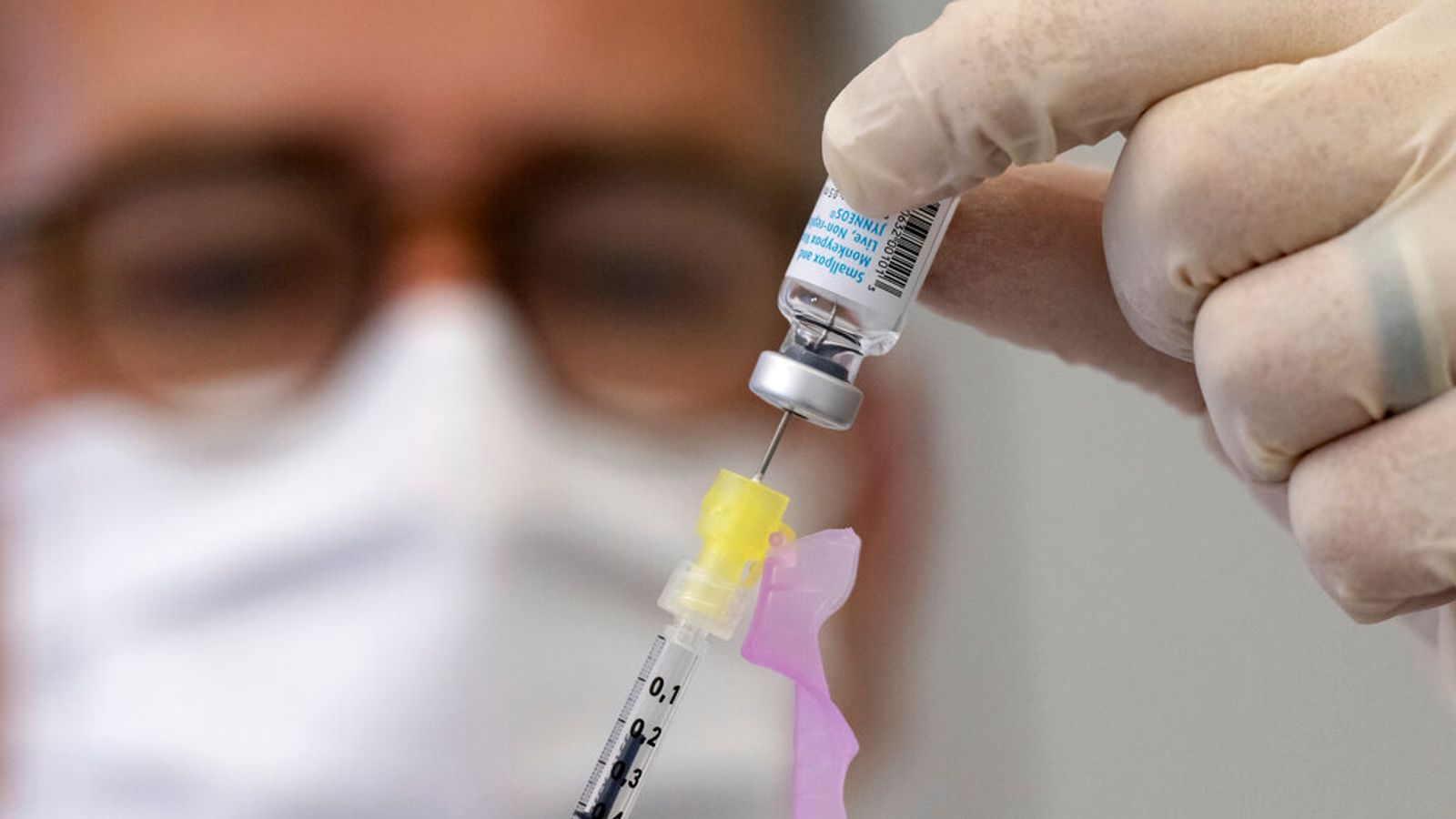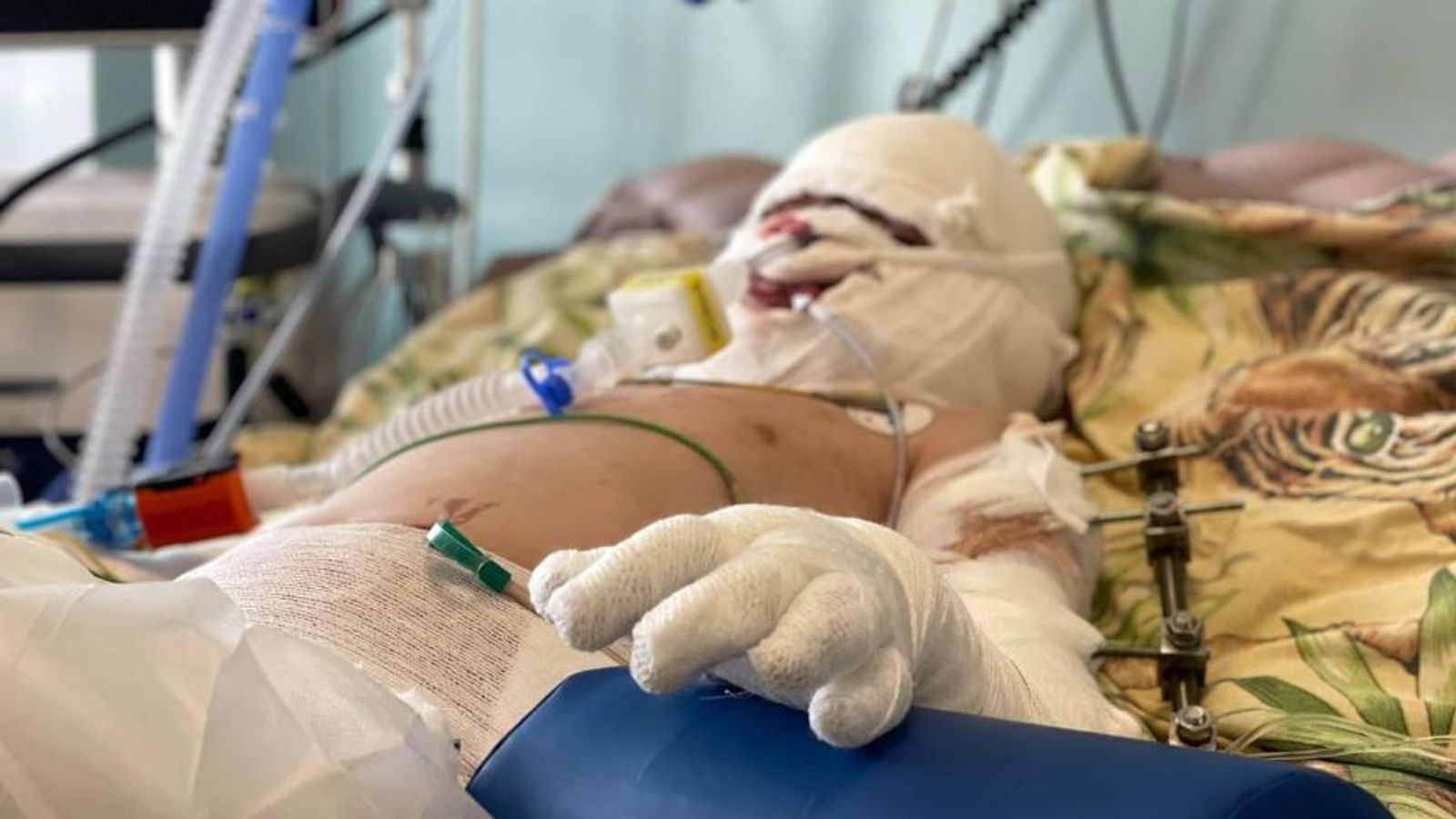Almost two-thirds of England’s prisoners who leave jail with a need for drug treatment aren’t receiving it, Sky News can reveal.
Of the 25,000 prison leavers who need support for substance misuse each year, 62% do not get the help they desperately need.
It means thousands are left to return to a vulnerable and dangerous life of drugs.
A tale of two prisoners – on the road to recovery or back on the streets taking drugs
It’s down to a broken system, with many local authorities across the country without the infrastructure in place to provide vital treatment.
The revelation comes as the Ministry of Justice announced funding of £120m to “crack down on addiction” with 18 abstinence-led drug wings in prisons and extra staff to coordinate between jails and the community.
Data shared with Sky News shows that Manchester is one of the worst areas in the country for successful engagement rates.
Recreational drug users could have passports and driving licences confiscated under new plans in government crackdown
Proliferation of new psychoactive substances being sold and consumed in Europe, drugs agency warns
Jailed British drugs smuggler used luxury yacht for international £160m cocaine plot
Only 23.8% of the city’s prisoners who leave jail needing drug treatment receive it, a figure way below the national average.
But in Sandwell, West Midlands, a particular model bucks the trend and is proving a success.
This local authority has one of the best rates of engagement in the country, with 62% of prison leavers who need drug treatment receiving vital help.
The question is, how is Sandwell, a place with high rates of poverty offering people a lifeline?
It’s down to the model. The NHS, council, police and drug specialists work together to help people overcome addiction.
Cranstoun, a social justice and harm reduction charity, has teams based in Sandwell’s custody suites, putting themselves in the unique position to be the first point of contact for offenders who use drugs when they’re arrested.
Megan Jones is the director of Cranstoun which is ingrained in Sandwell’s everyday response to drugs.
She said their method reduces drug-related deaths, gets more people into treatment and saves money for society.
“We feel it’s really important to have a whole system approach,” she said.
“So when we’re working with people who are engaged in the criminal justice system and are using drugs, there are a number of points in which we can engage with those people.
“Right from pre-arrest where we have a diversion scheme for people found in possession of drugs, to police custody across the West Midlands right through to our community services in Sandwell which picks people up from coming out of prison.”
Inside a “super-block” of custody suites in Sandwell, Cranstoun has an office that is manned day and night.
It allows drug and alcohol workers to meet offenders when they’re brought into the station and provide treatment all the way through to when they leave prison.
No other local authority in the country has a system like that in place.
Ms Jones believes this model can be copied and implemented by other local authorities across the country.
“It’s absolutely possible to copy and paste what we have here and the engagement in community treatment can be replicated in any area across the country.
“It would reduce drug-related deaths, it would get more people into treatment, it would save money for society.
“So we would really want to ask the government to look at the model that we’ve got here and empower the local authorities to come together, to work together to build the same sort of model across the country.”
But the government told Sky News: “Different areas have different challenges, which is why we cannot endorse a one size fits all approach.”
However, Justice Secretary Dominic Raab said the new funding is “designed to get offenders clean”.
“Drugs trap criminals in a destructive cycle of offending and prevent them from getting their lives back on track,” he said.
“Our plan will get offenders into rehab earlier, get them off all drugs permanently and support prisoners once they’re released into the community. That will drive down reoffending, and make our streets safer.”
Please use Chrome browser for a more accessible video player
Sandwell’s success is also measured by the area’s lowering death by drug misuse rate.
Only 2.2 people per 100,000 die from drug misuse, less than half the national average of 5 per 100,000.
Manchester’s figures are among the worst in the country at nine drug misuse deaths per 100,000 people.
Lisa McNally, director of public health at Sandwell Council, told Sky News the impact of increasing engagement rates is important and effective.
“There’s obviously a link between how successfully people engage with services when they come out of prison and drug-related deaths,” she said.
“So it would be shooting ourselves in the foot as a society to not support this group of people out of those problems and back into a more functioning role in society.”
She added where some local authorities are failing isn’t down to funding, but how money is spent.
“It’s also about how much of yourself and the focus of the organisation that goes into this.
“Sandwell Council and the NHS in Sandwell have always had a big focus on drug addiction, so that’s important. This work is resource intensive and it’s a cost-effective spend.
“If we can help someone back off drugs, that reduces costs for the whole society and it reduces crime.”
Despite having one of the worst records in the country, Manchester City Council told Sky News it was “pleased” with the number of people engaging with treatment upon leaving prison.
It added: “Making sure there is a clear and supporting pathway is a key part of the work the council does to help people recover from substance misuse.
“We know there is more that can be done to support what is a very vulnerable cohort.”








